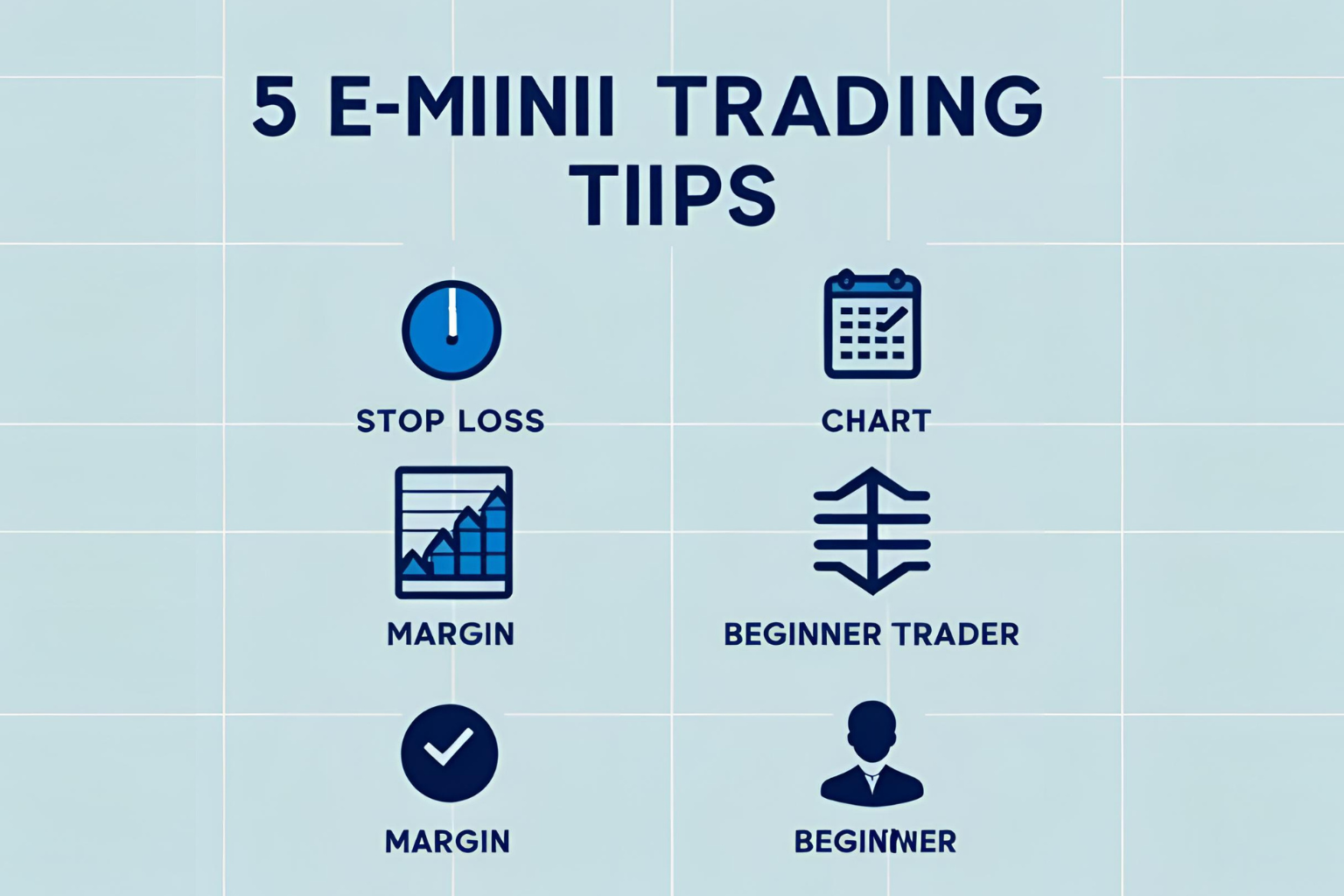5 Tips for Starting E-mini Trading as a Beginner
Starting your E-mini trading journey can feel overwhelming at first, especially with terms like ES, margin, leverage, and volatility thrown around. But with the right foundation and risk awareness, new traders can build confidence quickly. This guide offers five essential tips to help you start trading E-mini S&P 500 (ES) and Nasdaq 100 (NQ) futures like a pro—even as a beginner.
1. Start with a Demo Account
Before risking real money, open a simulated trading account with a broker like NinjaTrader, TradeStation, or Interactive Brokers. A demo environment helps you:
- Practice trade execution
- Learn platform tools
- Test strategies in real-time conditions
Get comfortable with order types, price ladders, and stop-loss placement.
2. Understand E-mini Contract Specifications
Each E-mini contract comes with specific characteristics you must know:
- ES (S&P 500): $50 per point, 0.25 tick size = $12.50 per tick
- NQ (Nasdaq 100): $20 per point, 0.25 tick size = $5 per tick
Also understand trading hours: Sunday 6:00 p.m. ET to Friday 5:00 p.m. ET with daily pauses from 5–6 p.m.
3. Focus on One Market First
While both ES and NQ are liquid, pick just one when starting out.
ES is generally less volatile than NQ, making it slightly easier to manage risk. Learn its behavior, typical ranges, and how it reacts to news events.
4. Master Basic Risk Management
Never risk more than 1–2% of your capital per trade. Key concepts to apply:
- Use stop-loss orders religiously
- Keep your position size small
- Know your broker’s margin requirements
Use a margin calculator to plan trades and avoid over-leveraging.
5. Avoid Trading During High-Impact News (Initially)
Macroeconomic events like Fed rate decisions, CPI releases, or NFP reports can cause huge price spikes. Until you gain experience, avoid entering new trades just before or during major news. Learn to observe how the market reacts before placing positions.
Bonus: Stick to a Trading Plan
Set a daily routine:
- Pre-market chart review
- Identify support/resistance
- Define trade setups
- Review performance post-session
Consistency in planning and discipline will separate you from impulsive traders.
FAQs
How much money do I need to start trading E-mini futures?
Some brokers allow day trading with $500–$1,000 margin per contract, but $5,000+ is recommended for proper risk control.
Is E-mini trading suitable for part-time traders?
Yes. Many traders focus on the U.S. morning session (9:30 a.m. – 11:30 a.m. ET) for high volume and volatility.
Can I trade E-minis from outside the U.S.?
Absolutely. E-mini futures are accessible globally through major brokers.
Do I need special software?
Most brokers offer free platforms. You can also integrate TradingView, NinjaTrader, or Thinkorswim for advanced charting.
Should I trade both ES and NQ at the same time?
Not as a beginner. Start with one market to avoid confusion and manage trades more effectively.



